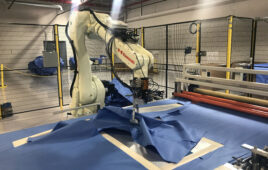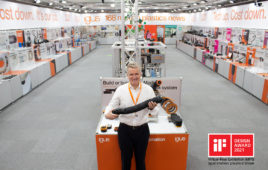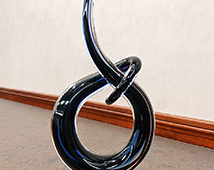It looks as though the U.S. Centers for Disease Control and Prevention (CDC) may end up strongly suggesting that Americans cover their faces in public until the coronavirus pandemic plays out. The Washington Post reports the recommendations now being floated would call for the use of cloth coverings instead of hard-to-find surgical and N95 masks.
This great masking of the masses will most likely result in a mushrooming cottage industry for home-made masks fashioned out of non-traditional materials. Of course, some materials make better masks than others. Here’s what’s actually known.
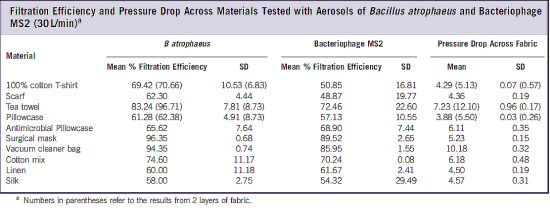
The results from the UK study. Here SD=standard deviation.
A single study made in 2013 comprises most of what is known about make-shift surgical mask material. Researchers in the UK looked at how nine common materials – a cotton T shirt, a scarf, a tea towel, a pillowcase, an antimicrobial pillowcase, a vacuum cleaner bag, linen, silk, and a mix of cotton– compared with the performance of a surgical mask. They measured both filtration efficiency and the pressure drop across the fabric using both a single and a double layer of each material.
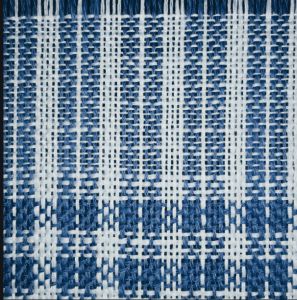
For readers who never thought they’d need to know what a tea towel weave looks like, here’s an example.

Protective mask examples from mask-maker Crosstex.
Test study subjects fashioned their own masks based on the design of a surgical mask, much like the legions of people today who are using YouTube videos for guidelines about making DIY masks. These cobbled-together masks were then fit-tested to make sure they actually worked well. Finally, the masks got sprayed with a couple of organisms comparable in size to influenza virus.
Filtration efficiency tests measured how well each mask material filtered out these test organisms. But measurements of pressure drop across the fabric also revealed that a fabric could provide good filtration while still being a cruddy mask material. That was the case for both vacuum cleaner bags and tea towels used in single and double layers. Reading between the lines of the study, it seems probable that sucking air through these materials was so difficult that most of the air that test subjects breathed came in from around the edges of the masks rather than through the mask material.
After all was said and done, the researchers concluded the pillowcase and the 100% cotton t-shirt were the most suitable household materials for an improvised face mask. They figured the slightly stretchy quality of the t-shirt made it the more preferable choice for a face mask as it was considered likely to provide a better fit. They also seemed to think that doubling the layers of fabric was probably counterproductive. It was harder to breath through more layers, and only in the case of the tea towel was there a significant rise in filtration efficiency. But even a single layer of tea towel was tough to breath through. Two layers of the stuff was significantly worse.
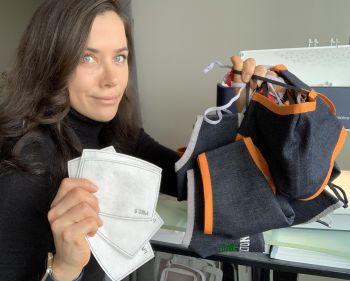
Another kind of DIY mask, this one sewn by DW executive editor Lisa Eitel from directions on a YouTube video: It uses a PM2.5 filter insert rather than fabric as the filtering medium.
Even so, it was clear from that study results that given a choice between a surgical mask and one fashioned at home, the surgical mask is far better. A less known fact, however, is that there are different grades of protective masks, and each one has differing filtration qualities. Masks are typically classified in terms of their filtering capacities.
The N95 mask is usually what is referred to as a surgical mask. Masks in this category meet a filtering level known as FFP2 (Free Flight Phase 2) or FFP3 spelled out under a European standard called EN 149: 2001. The FFP ratings relate to the upper concentration limit of hazardous material the mask can handle. For guarding against influenza, however, the more pertinent measure is the PFE (Submicron Particle Filtration Efficiency) rating. N95 masks typically have a PFE = 99.9% for 0.1-micron particles. There is also the BFE (Bacterial Filtration Efficiency) rating which gives the percentage filtering of aerosol particles at a size of 3 microns.
There are several categories of protective masks with ratings somewhat less than that of the N95. The best of these have ASTM ratings from level three to level one. Level three masks typically have BFE ≥ 98% and PFE ≥ 98% ; Level two have BFE ≥ 98% and PFE ≥ 98% ; and Level one masks sport BFE ≥ 95% and PFE ≥ 95%.
Finally, there are the masks available in hardware stores that are donned while sanding plaster or using a power saw. These generally don’t have ratings for particle filtration efficiency.
You may also like:
Filed Under: Fighting COVID-19






